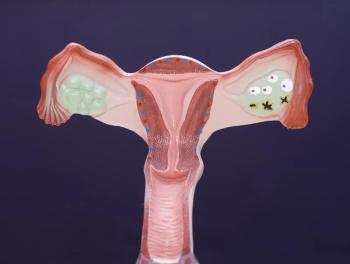
- Oncology Vol 29 No 2
- Volume 29
- Issue 2
Radiation Therapy for Node-Positive Prostate Cancer: It’s Time for a Randomized Trial
We are in urgent need of a randomized trial comparing radiation plus ADT vs ADT alone for men with node-positive prostate cancer.
As Drs. Baker, Mohiuddin, and Chen nicely summarize in their article,[1] the optimal treatment of node-positive prostate cancer remains controversial due to gaps in level 1 evidence to guide some of the fundamental management decisions. While the benefit of androgen deprivation therapy (ADT) has been demonstrated for the adjuvant setting in a randomized trial by the Eastern Cooperative Oncology Group (ECOG 3886)[2] and for the definitive setting in subgroup analyses of randomized trials by the Radiation Therapy Oncology Group (RTOG 85-31)[3] and Granfors et al,[4] there has not been a randomized trial published that specifically evaluates the benefit of adding radiation therapy to ADT for node-positive patients.
As a result, clinicians weighing the risks and benefits of RT for patients with this challenging disease are forced to rely on the observational data. Consequently, whether a patient with node-positive prostate cancer will receive RT in 2015 will be left partly up to chance-namely the chance that his treating team happens to interpret the observational data with optimism vs pessimism.
Clinicians who feel optimistic about the benefits of RT will cite the Surveillance, Epidemiology and End Results (SEER) studies by Tward et al[5] and Rusthoven et al,[6] that showed that treatment with radiation was associated with significantly improved survival. In addition, they may note the positive findings from the 1,000-plus patient series from Italy published by Abdollah et al,[7] in which node-positive patients were randomized to ADT vs ADT plus adjuvant radiotherapy after radical prostatectomy and extended nodal dissection. In this study, adjuvant radiotherapy plus ADT was associated with a 63% reduction in prostate cancer–specific mortality (PCSM) compared with ADT alone.
Optimists were given even more reason to be optimistic when the investigators of the STAMPEDE (Systemic Therapy in Advancing or Metastatic Prostate Cancer: Evaluation of Drug Efficacy) trial presented a reanalysis of the control arm in abstract form at the 2014 meetings of the European Society for Medical Oncology (ESMO) and the American Society for Radiation Oncology (ASTRO). Their results suggested that newly diagnosed node-positive patients who received radiotherapy plus ADT at the discretion of their treating clinicians experienced a 55% reduction in failure events compared with those who received ADT alone.[8]
On the other hand, those who are pessimistic about the value of radiotherapy will point out that observational data are always subject to selection bias; patients selected for radiotherapy may have had more favorable disease that was deemed more likely to be curable than those who did not receive radiation; and that, while these studies can adjust for measured confounders, there is no way to adjust for any unmeasured baseline differences. Radiation pessimists may also point out that the study by Kaplan et al[9] from SEER-Medicare did not find a PCSM benefit to postoperative radiation after prostatectomy. Pessimists believe the risks of pelvic nodal irradiation are not worthwhile, given that the evidence in favor of it is not as strong as they would like.
With the advent of intensity-modulated radiation therapy, which allows for significant sparing of the small bowel and reduced toxicity during pelvic radiotherapy, I tend to side more with the optimists, particularly when caring for patients who are younger and healthier and therefore have few other threats to their short-term survival besides prostate cancer. For these patients, I feel that pelvic and prostate radiation offer a potential upside without an unacceptably high risk of toxicity. However, as noted above, there are also very legitimate reasons to side with the pessimist camp.
Given the significant scientific uncertainty and thoughtful viewpoints on both sides of the debate, we are in urgent need of a randomized trial comparing radiation plus ADT vs ADT alone for men with node-positive prostate cancer, in the definitive and adjuvant settings. A similar trial was attempted nearly 20 years ago by the RTOG but was closed due to low accrual. While strong opinions on both sides could still be a hindrance to accrual, the climate may now be right to make this trial possible. In the years since the early closure of the first trial, the publication of more observational studies in favor of RT may have pushed some pessimists closer to equipoise, and the requirements by some insurance companies for level 1 evidence before they agree to pay for a treatment may force even some of the most fervent optimists to enroll patients in such a trial.
Without this type of trial, we will be having the exact same debates-and with the same level of uncertainty-20 years from now, and we will continue to be in this situation where either many patients will endure the side effects of radiation without any possibility of benefit (if the pessimists are right), or many will be deprived of a chance of cure from radiation (if the optimists are right).
Financial Disclosure:Dr. Nguyen has consulted for Medivation.
References:
1. Baker BR, Mohiuddin JJ, Chen RC. The role of radiotherapy for node-positive prostate cancer. Oncology (Williston Park). 2015;29:108-16.
2. Messing EM, Manola J, Sarosdy M, et al. Immediate hormonal therapy compared with observation after radical prostatectomy and pelvic lymphadenectomy in men with node-positive prostate cancer. N Engl J Med. 1999;341:1781-8.
3. Lawton CA, Winter K, Grignon D, et al. Androgen suppression plus radiation versus radiation alone for patients with stage D1/pathologic node-positive adenocarcinoma of the prostate: updated results based on national prospective randomized trial Radiation Therapy Oncology Group 85-31. J Clin Oncol. 2005;23:800-7.
4. Granfors T, Modig H, Damber JE, et al. Long-term followup of a randomized study of locally advanced prostate cancer treated with combined orchiectomy and external radiotherapy versus radiotherapy alone. J Urol. 2006;176:544-7.
5. Tward JD, Kokeny KE, Shrieve DC. Radiation therapy for clinically node-positive prostate adenocarcinoma is correlated with improved overall and prostate cancer-specific survival. Pract Radiat Oncol. 2013;3:234-40.
6. Rusthoven CG, Carlson JA, Waxweiler TV, et al. The impact of definitive local therapy for lymph node-positive prostate cancer: a population-based study. Int J Radiat Oncol Biol Phys. 2014;88:1064-73.
7. Abdollah F, Karnes RJ, Suardi N, et al. Impact of adjuvant radiotherapy on survival of patients with node-positive prostate cancer. J Clin Oncol. 2014;32:3939-47.
8. James ND, Spears MR, Clarke NW, et al. Impact of node status and radiotherapy on failure-free survival in patients with newly diagnosed non-metastatic prostate cancer: data from >690 patients in the control arm of the STAMPEDE trial. Int J Radiat Oncol Biol Phys. 2014;90:S13.
9. Kaplan JR, Kowalczyk KJ, Borza T, et al. Patterns of care and outcomes of radiotherapy for lymph node positivity after radical prostatectomy. BJU Int. 2013;111:1208-14.
Articles in this issue
almost 11 years ago
The Role of Radiotherapy in Node-Positive Prostate Canceralmost 11 years ago
Node-Positive Prostate Cancer: A Call for Level 1 Evidencealmost 11 years ago
Disseminated Intravascular Coagulation in Patients With Solid Tumorsalmost 11 years ago
Optimal Treatment Selection for Patients With Metastatic Melanomaalmost 11 years ago
Systemic Therapy of Metastatic Melanoma: On the Road to CureNewsletter
Stay up to date on recent advances in the multidisciplinary approach to cancer.

















































































